Nuno Sá: Azores
Nuno Sá is a professional photographer who has been living in the Azores for the past 10 years, and specializes in marine wildlife photography. He has published 6 books and is a regular contributor to several national and international magazines. His pictures have been displayed in some of the largest natural history museums in the world, including both the Natural History Museum in London and the Smithsonian National Museum of Natural History, in Washington.
Nuno was recently awarded first place in the “Divers” category of the 2013 DEEP Indonesia competition, was placed in the “Oceans” category of the Natures Best Photography-Windland Smith Rice International Awards 2012, and the Epson World Shoot Out “Wide angle” category in 2012.
His most recent project is called Oasis by Nuno Sá- The incredible marine life of the Azorean seas. The aim of this is to educate Azoreans, Portuguese and the world alike to the amazing sea life of the Azores.
Oasis- The incredible marine life of the Azorean seas.
The Azores-the most remote North Atlantic islands, nine green dots in the immense blue sea. In the middle of the Atlantic Ocean, this group of islands is an Oasis of life in the immense blue desert for a large number of marine species crossing the Atlantic. With a unique marine biodiversity and richness, these waters are home for more than 24 different species of whales and dolphins, 5 species of marine turtles and more that 600 fish species, including pelagic fishes, elegant giant manta rays, high-speed sharks and friendly groupers.
The beauty of the landscape can only be compared to the hidden wonders of the sea. Like the tip of an iceberg, the nine islands are only the small visible part of a vast underwater volcanic mountain range, emerging here to create a unique ecosystem. From the largest fish in the world (the whale shark) to the largest animal ever to have lived on Earth (the blue whale), the biggest carnivore in the planet (the sperm whale) and many shark species, they all find shelter in the deep Azorean waters. Countless hidden secrets that we are only allowed, for brief moments, to catch a glimpse of.
This is our sea and our heritage that we all have the duty to preserve-and the privilege of living in-an Oasis in the Atlantic.
Oasis by Nuno Sá also has a Facebook page and a free app for iPhone and iPad on the App Store.
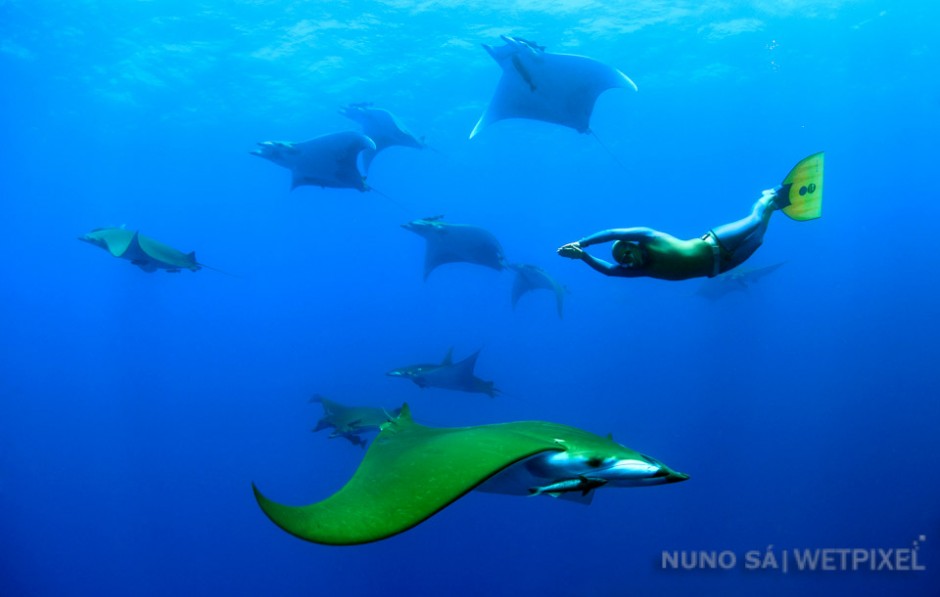
Devil ray (Mobula tarapacana). Ambrósio seamount - Santa Maria Island.
Diving “in the blue” with big pelagic species is one of the Azores highlights, and the water column is definitely home to some of the most amazing creatures
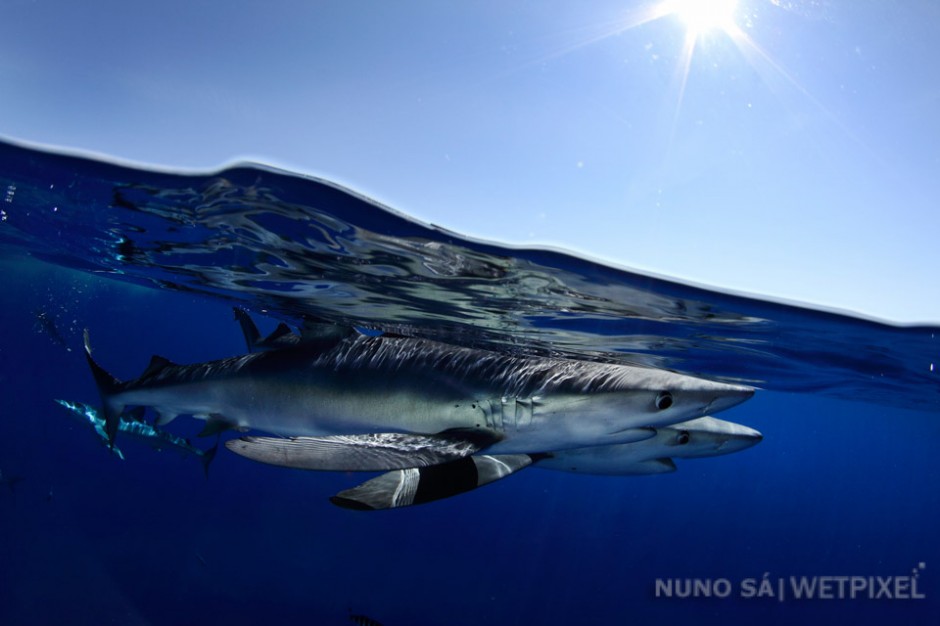
Blue shark (Prionace glauca). Azores - Condor Seamount (10 miles off Faial island)
The Azores are today regarded as the world's best destination for diving with blue sharks.
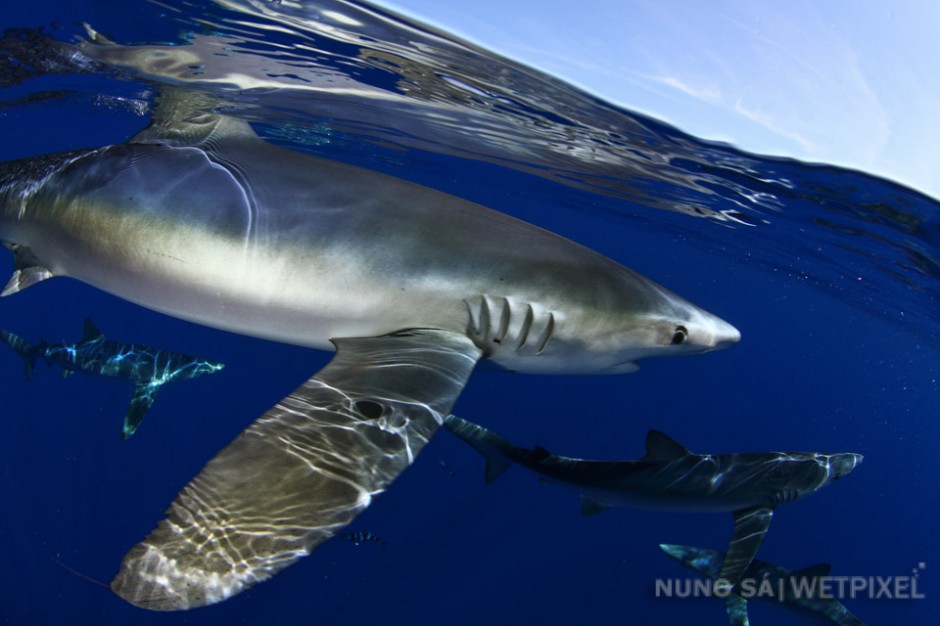
Blue shark (Prionace glauca).
Near-threatened Blue and Mako sharks can be found in several islands of the Azores, as well as on off-shore dives on remote underwater seamounts, such as Condor bank (off Pico and Faial Islands).
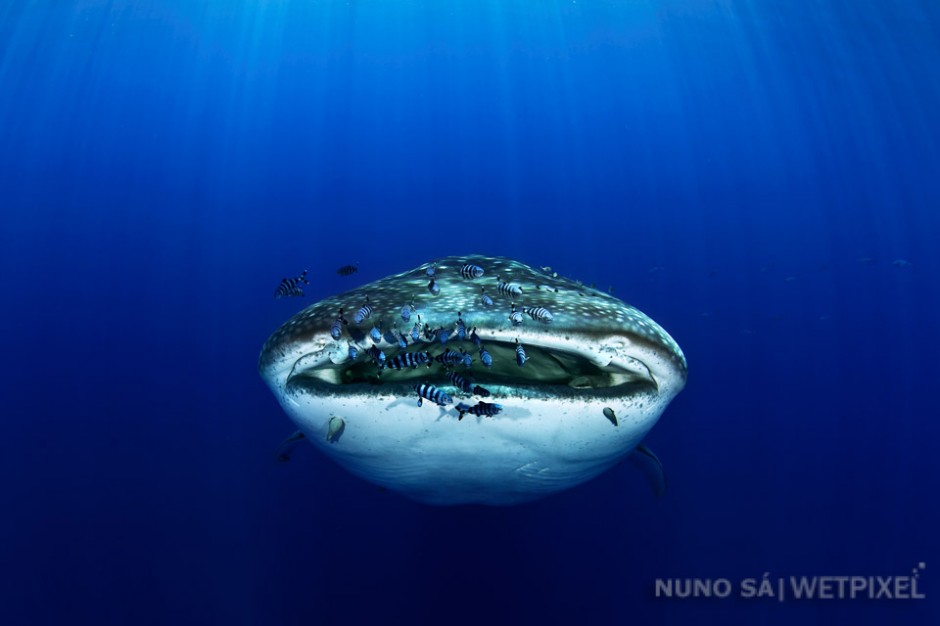
Whale shark (Rhincodon typus). Santa Maria Island.
In the Azores, whale sharks are often seen in the Eastern group, off the islands of Santa Maria between July and October.
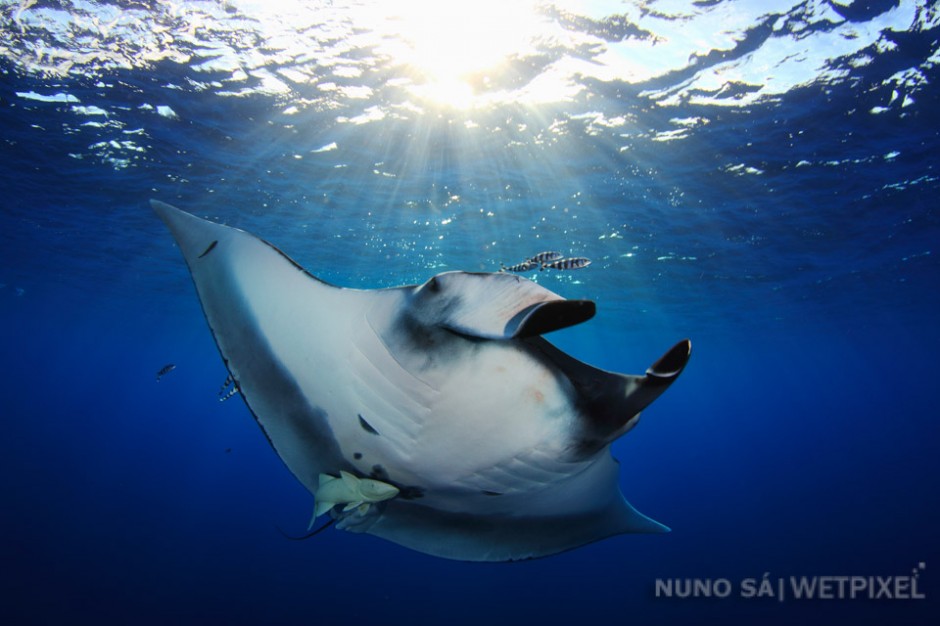
Giant manta (Manta birostris). Santa Maria island.
Mantas are a lot less comon than devil rays in the Azores. When you do get lucky and see one it usually big and followed by several smaller cousins (Devil rays).
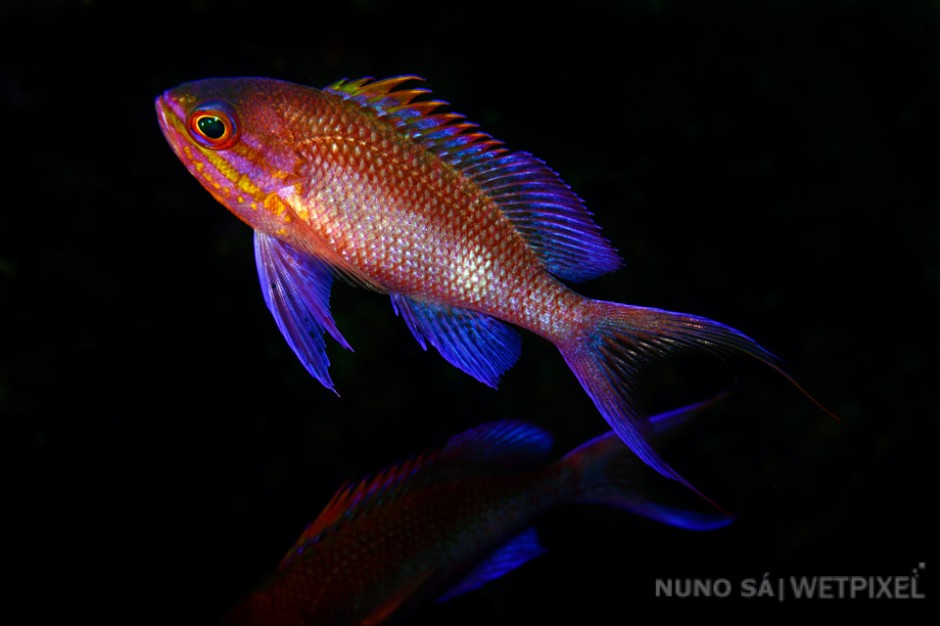
Swallowtail sea perch (Anthias anthias)
The colorful Swallowtail sea perch can be found on all the azores islands, usually at depths greater than 30m.
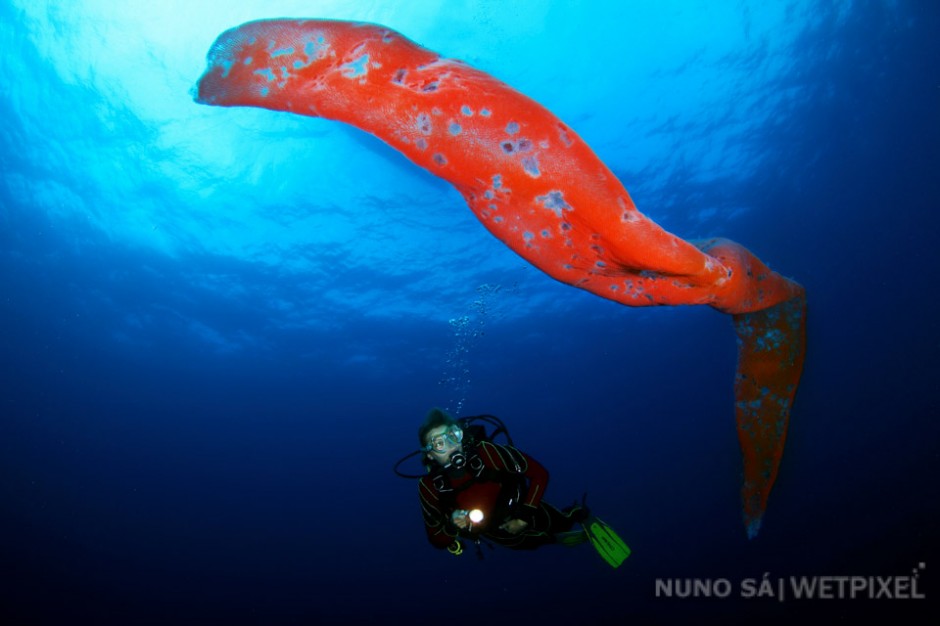
Pyrosome (Pyrosoma sp.) Corvo Island.
Salps feed on plankton and suspended particles by filtration. The Pyrosome is constituted by thousands of this individuals called zooids.
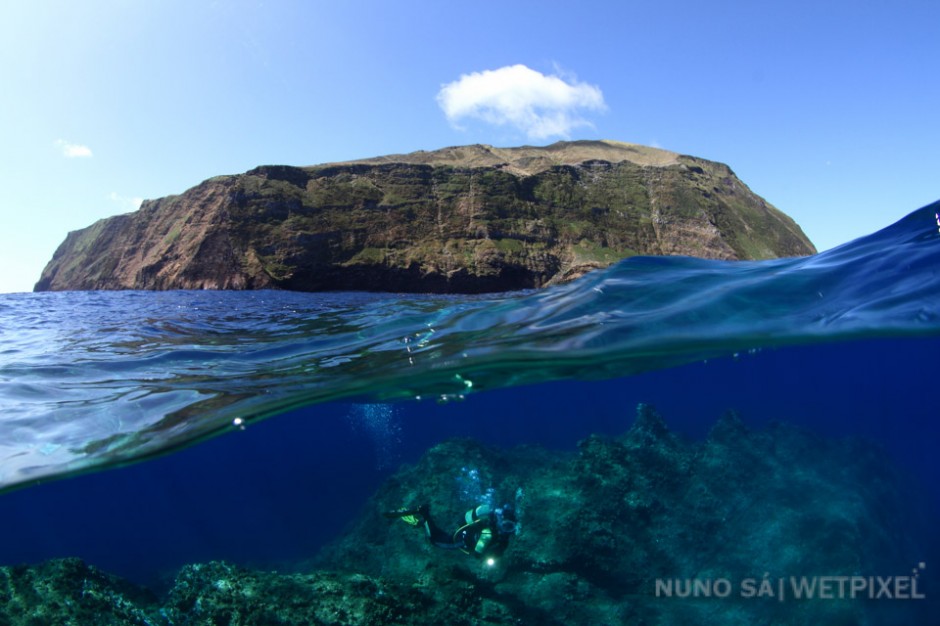
Corvo Island is the smallest island of the archipelago, located in the western group along with the Flores island. It is a special place with unique landscapes and a UNESCO World Biosphere Reserve.
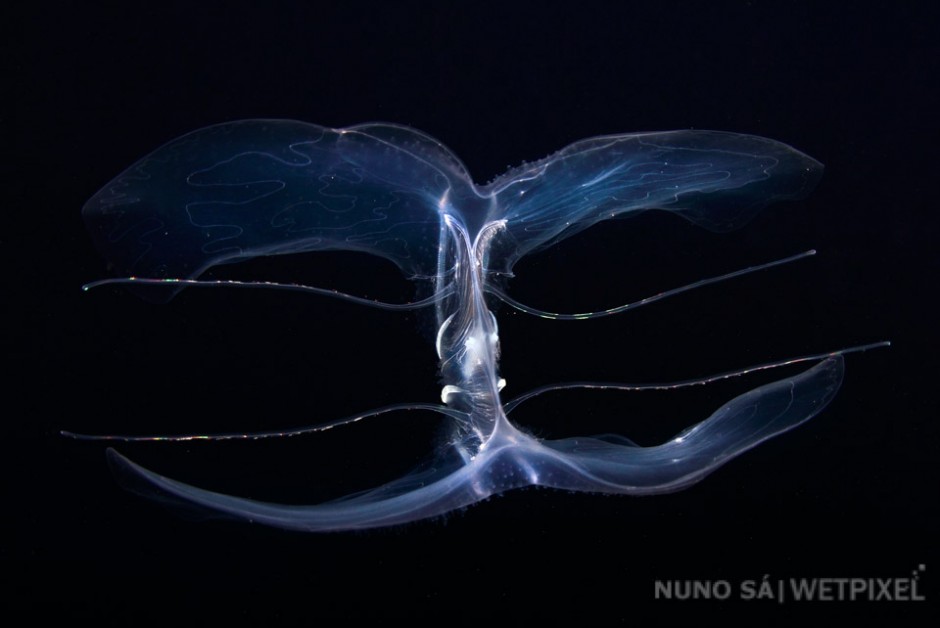
Comb jelly (Ctenophora sp. ) Ambrósio, Santa Maria Island.
Strange looking comb jellies can be found in shallow waters near seamounts, where ascending currents bring them close to the surafce.
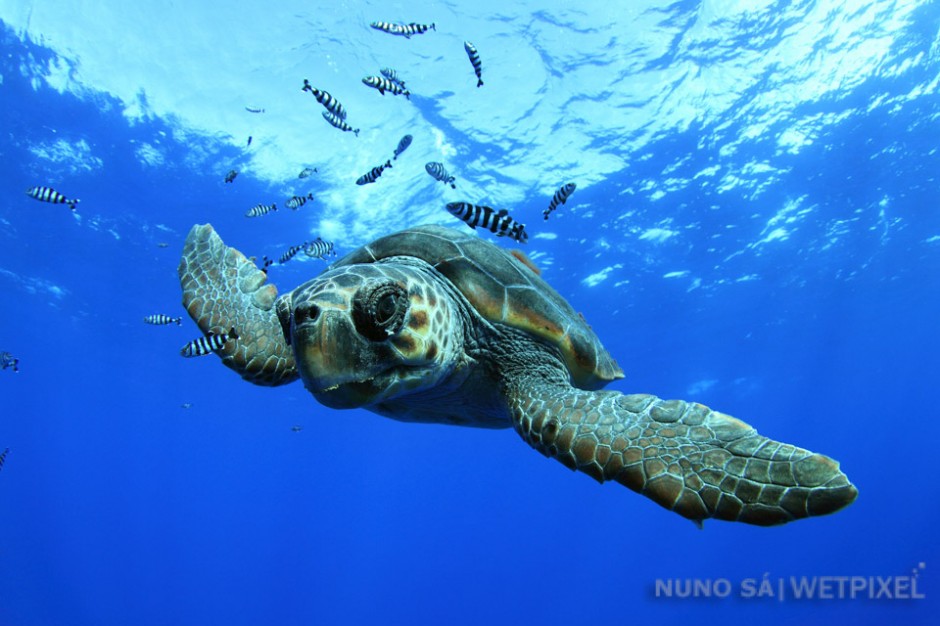
The loggerhead sea turtle (Caretta caretta) arrives in its juvenile stage to the Azores. The archipelago’s location, in the middle of the Atlantic Ocean, is a productive foraging area for loggerheads.
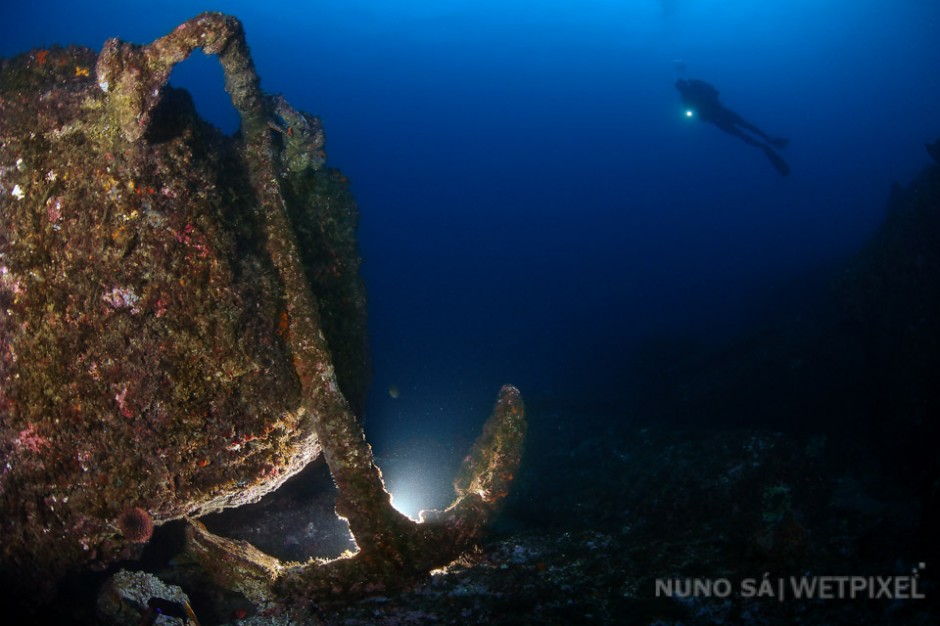
Anchor graveyard, Angra do Heroísmo bay, Terceira Island.
Wrecks from the XVI to XIX century can be found off several islands, due to the historic importance of the Azores to ships crossing the Atlantic Ocean.
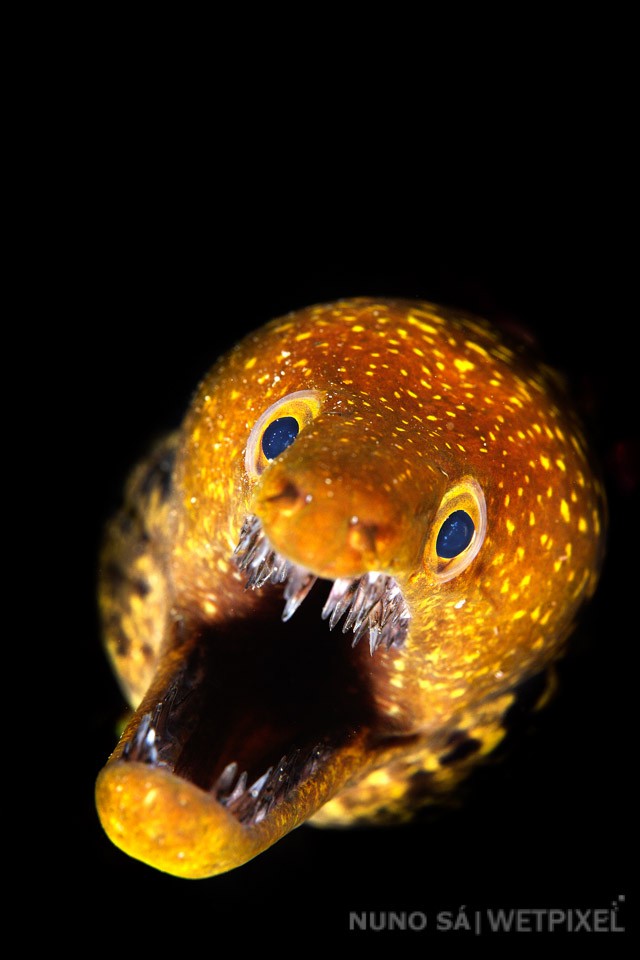
Fangtooth moray (Enchelycore anatina)
Several species of morays can be seen hiding among the rocks on a typical dive in the Azores. The fangtooth moray (or tiger moray) is one of the most empressive and photogenic species.
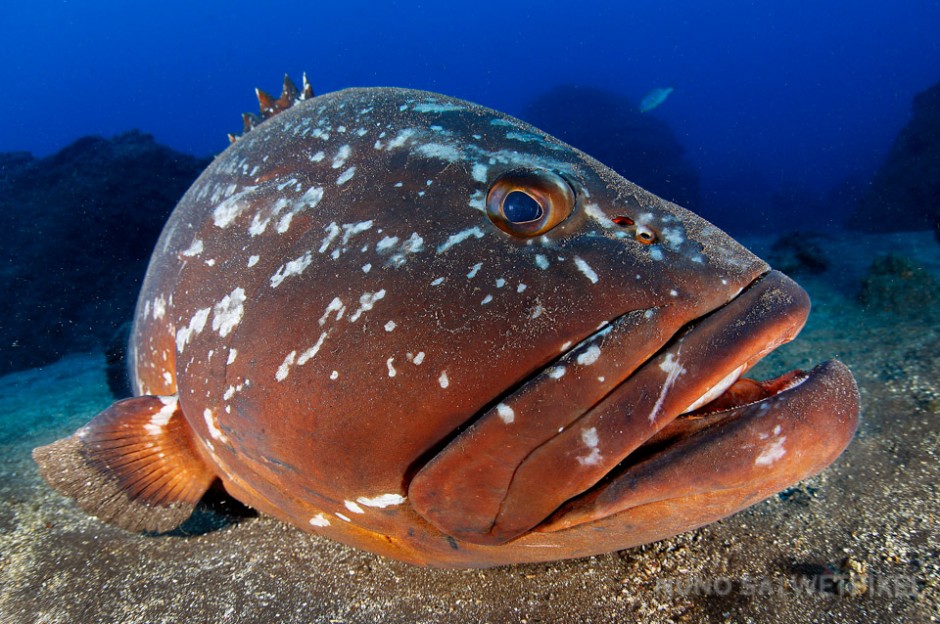
Large and curious dusky groupers (Epinephelus marginatus) can be found on every island of the archipelago.
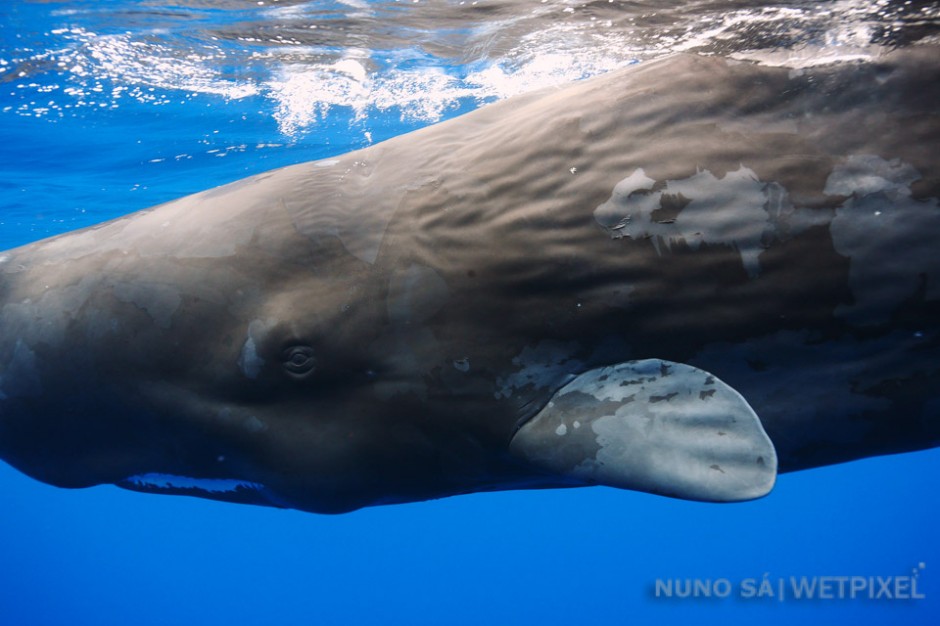
Sperm whale (Physeter macrocephalus)
Sperm whales can bee seen on all the Islands of the Azores, althought sightings are more regular at the Islands of pico, Faial and São Miguel. Image taken under special permit from the Azores Goverment.
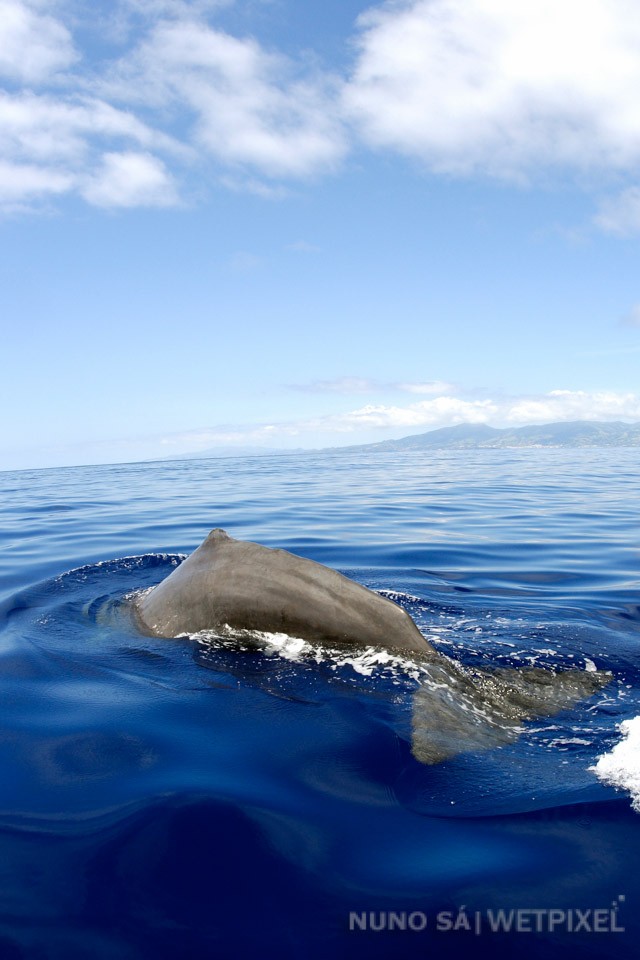
Sperm whale (Physeter macrocephalus)
"Reproduction groups" of Sperm whales, formed by females and calves can be seen year -round in the Azores. Image taken under special permit from the Azores Goverment.
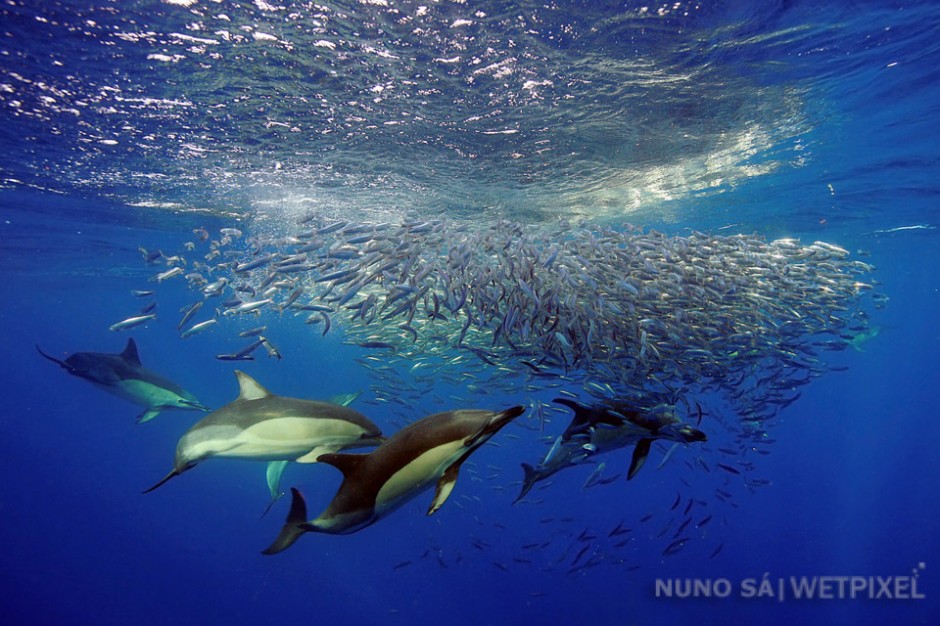
Common dolphin (Delphinus delphis)
Common dolphins can be seen all year round in the Azores Islands.They are known to hunt cooperatively to herd schools of pelagic fish at the surface.
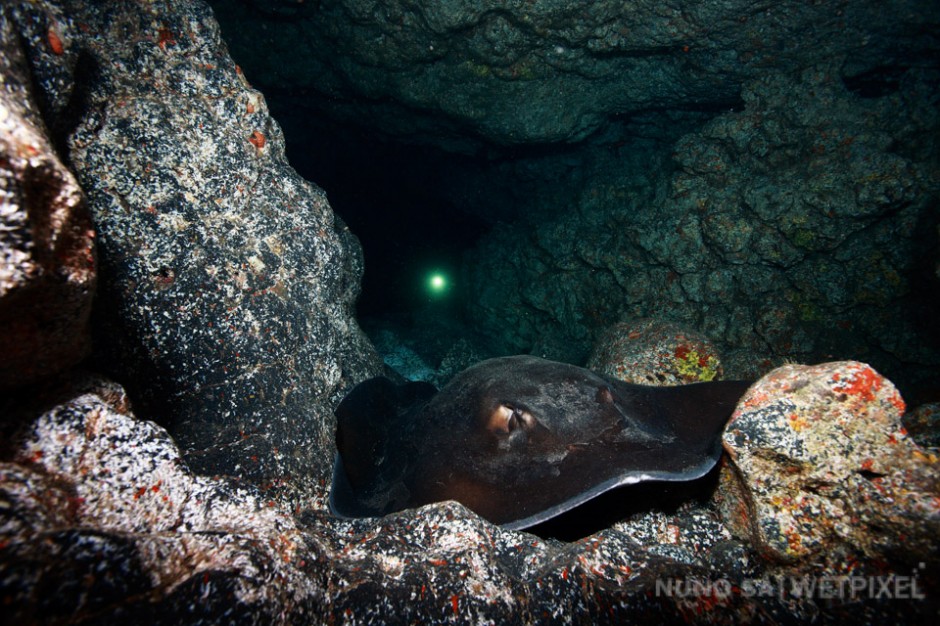
Round stingray (Taeniura grabata)
Large round stingrays can be found during shore dives around all the islands of the Azores. They typically live in sandy or rocky areas close to shore.
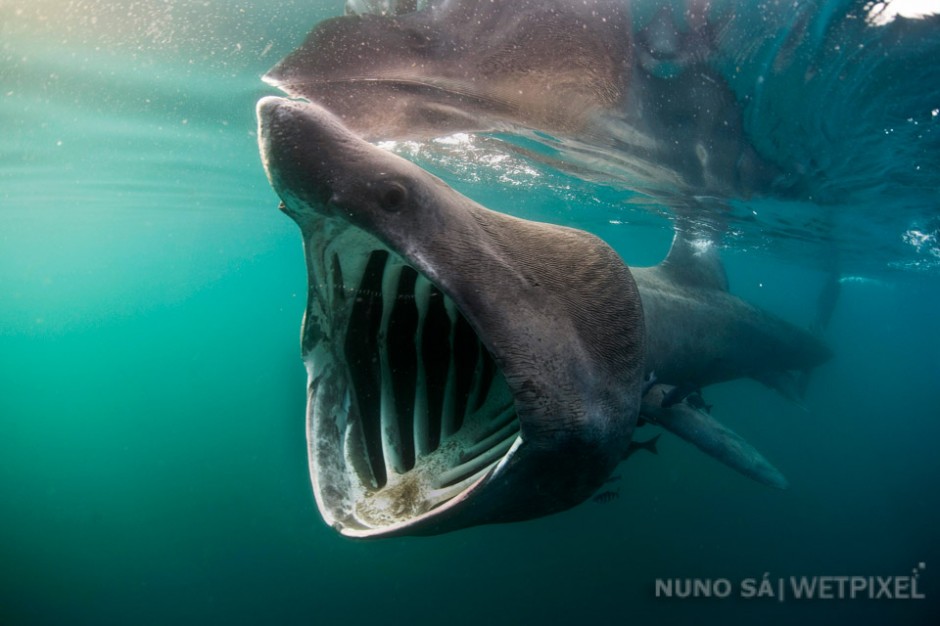
Basking shark (Cetorhinus maximus)- São Miguel Island.
The basking shark is only sighted rarely in the Azores, however, several records do exist, including one from 1956 when it was found in the stomach of a sperm whale on Faial Island.